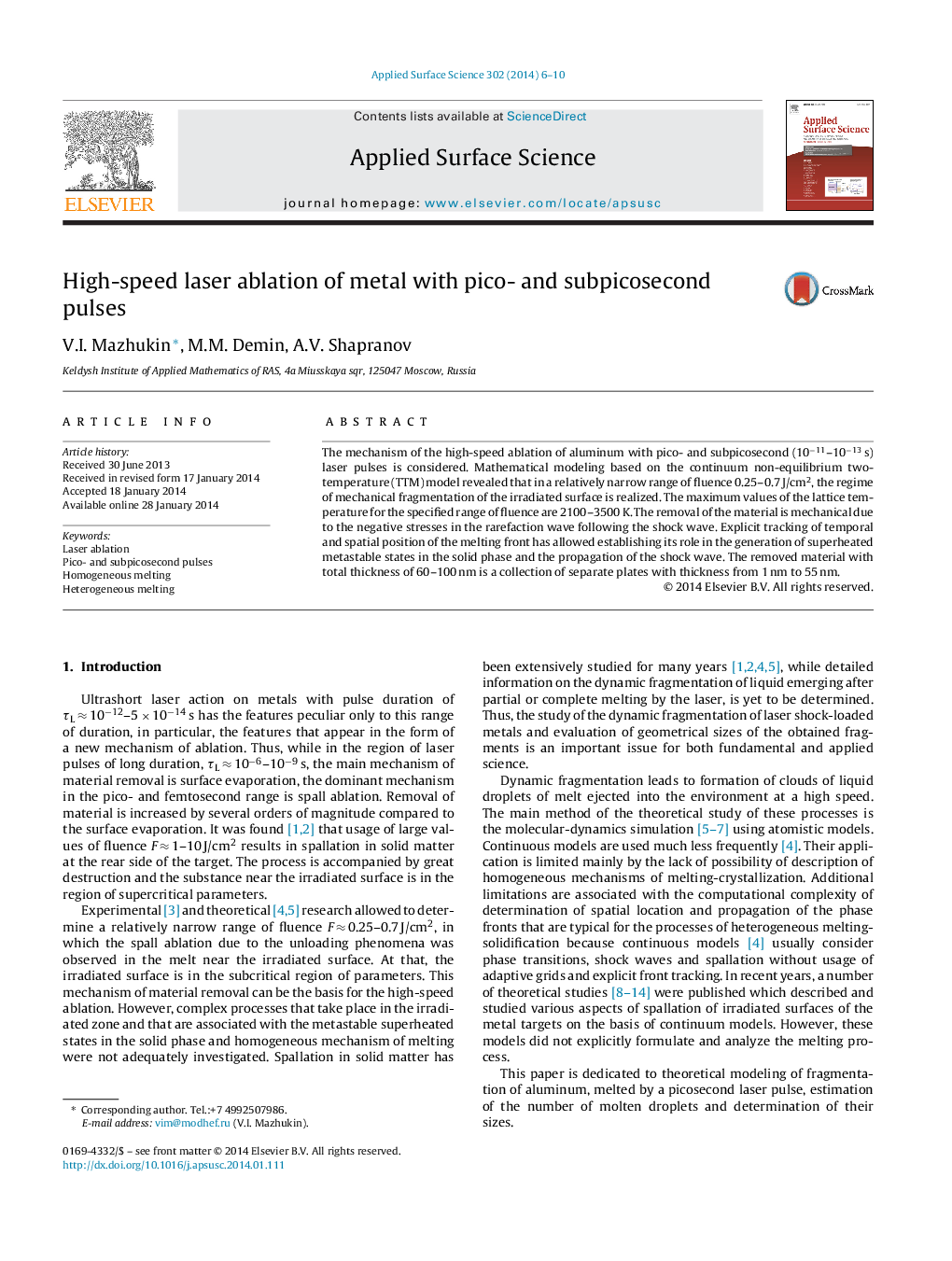| Article ID | Journal | Published Year | Pages | File Type |
|---|---|---|---|---|
| 5351587 | Applied Surface Science | 2014 | 5 Pages |
Abstract
The mechanism of the high-speed ablation of aluminum with pico- and subpicosecond (10â11-10â13Â s) laser pulses is considered. Mathematical modeling based on the continuum non-equilibrium two-temperature (TTM) model revealed that in a relatively narrow range of fluence 0.25-0.7Â J/cm2, the regime of mechanical fragmentation of the irradiated surface is realized. The maximum values of the lattice temperature for the specified range of fluence are 2100-3500Â K. The removal of the material is mechanical due to the negative stresses in the rarefaction wave following the shock wave. Explicit tracking of temporal and spatial position of the melting front has allowed establishing its role in the generation of superheated metastable states in the solid phase and the propagation of the shock wave. The removed material with total thickness of 60-100Â nm is a collection of separate plates with thickness from 1Â nm to 55Â nm.
Keywords
Related Topics
Physical Sciences and Engineering
Chemistry
Physical and Theoretical Chemistry
Authors
V.I. Mazhukin, M.M. Demin, A.V. Shapranov,
